Climbing Back Into a Kayak in 25 Easy T
Kayaking is more often than not fun and games until the weather takes a plough for the worse. And even a little more wind than you predictable can apace derail an otherwise neat solar day on your favorite waterway.
The wind is something yous should always be prepared for before you caput out on the water. And that'south always going to be true whether you lot're kayaking on lakes, rivers, oceans, or coastal waterways.
For our money, the Ventusky app is 1 of the best online tools for staying up-to-date with average air current speeds and gust speeds in your expanse. But in that location are, of course, other apps that you can utilize to stay ready for major shifts in wind speed or direction.
Aside from but tracking the current of air patterns in your surface area, there are other things you can practice to stay prepared for safe kayaking experiences on your preferred waterways.
In this article, we're going to explain and expand on the safe and dangerous current of air limits for kayaking in various atmospheric condition. This will be the Ultimate Guide to Condom and Unsafe Wind Limits for recreational, sea, whitewater kayaking, and kayak line-fishing.
Table of Contents
- 1 Prophylactic And Dangerous Wind Limits For Recreational Kayaking
- i.i Prophylactic Wind Limits For Recreational Kayaking
- ane.two Dangerous Current of air Limits For Recreational Kayaking
- ane.3 Tips To Ready For Windy Recreational Kayaking Conditions
- 2 Prophylactic And Unsafe Wind Limits For Sea Kayaking
- 2.1 Safe Wind Limits For Body of water Kayaking
- 2.2 Unsafe Air current Limits For Body of water Kayaking
- 2.3 Tips To Prepare For Windy Body of water Kayaking Conditions
- 3 Safe And Unsafe Current of air Limits For Whitewater Kayaking
- three.ane Safety Air current Limits For Whitewater Kayaking
- 3.ii Dangerous Wind Limits For Whitewater Kayaking
- three.3 Tips To Set For Windy Whitewater Kayaking Conditions
- 4 Safe And Dangerous Wind Limits For Kayak Fishing
- iv.i Safety Wind Limits For Kayak Fishing
- 4.two Dangerous Wind Limits For Kayak Fishing
- four.3 Tips To Prepare For Windy Kayak Fishing Weather
- 5 Final Thoughts
- vi Enjoyed Safe And Dangerous Wind Limits For Kayaking – Ultimate Guide? Share information technology with your friends and then they as well can follow the Kayak aid journey.
- half dozen.ane Share on Pinterest
Prophylactic And Dangerous Wind Limits For Recreational Kayaking
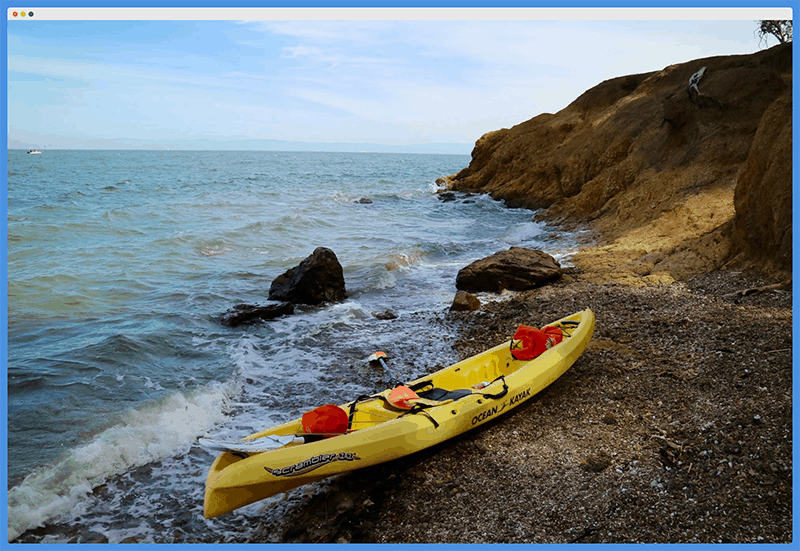
Almost recreational kayakers spend the vast bulk of their time on lakes, ponds, and slow-moving rivers.
These types of waterways don't typically offer the challenges created by currents or large waves, just wind can still present a massive challenge for all recreational kayakers.
So what are the safe and dangerous wind limits for recreational kayaking?
Rubber Wind Limits For Recreational Kayaking
The good news about recreational kayaking is that it's typically done on more protected waterways that are less impacted by the effects of loftier winds.
That being said, some recreational kayaking certainly takes place on lakes similar Lake Tahoe or Lake Superior.
These massive bodies of water can have a lot of 'fetch' for the air current to pick up water and, equally a consequence, create big waves.
Fetch is a term that refers to the maximum length of open water that air current can travel over without beingness blocked or diverted by a landmass.
On one of North America's largest lakes such as Lake Tahoe, for example, there are 22 miles of fetch for the wind to impact the surface of the water. This can cause great challenges to kayakers, not to mention the consequence of the air current itself.
The reality is that sustained winds to a higher place even just 5 miles per hr are going to have a noticeable impact on your ability to maneuver your kayak and brand efficient headway towards your shoreline destination.
Winds from 5 to ten miles per 60 minutes are going to start cooling y'all off and have you thinking nigh making landfall every bit before long equally possible. Only those safe limits for recreational kayaking on nearly lakes, ponds, and tedious-moving rivers.
So, safe upper wind limits for recreational kayaking on smaller bodies of water can probably be somewhere between fifteen and xx miles per hr.
But recreational kayakers on larger bodies of water should brainstorm to be concerned when wind speeds reach 10 to 15 miles per hour.
Dangerous Wind Limits For Recreational Kayaking
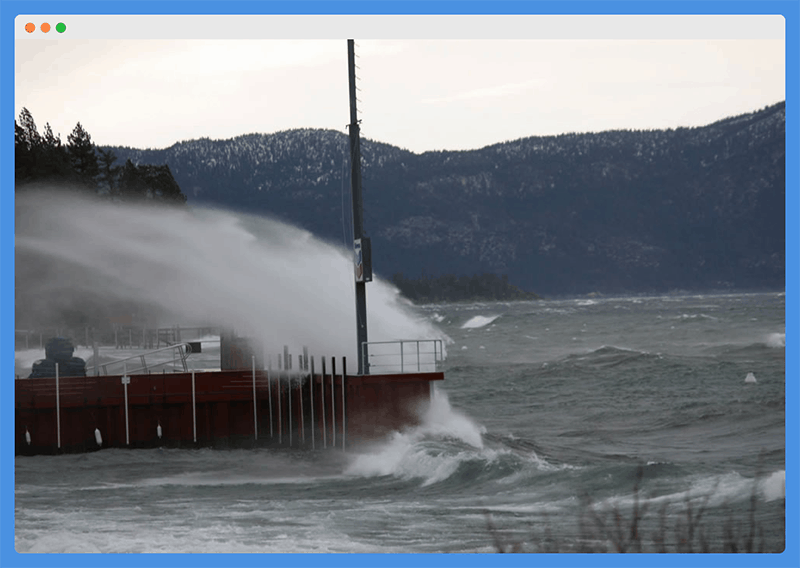
Believe information technology or not, the image to a higher place depicts heavy winds on a lake, non an sea! Even the serene, crystal clear waters of a large body of water similar Lake Tahoe (pictured higher up) tin can become quite ocean-similar when winds begin to reach their dangerous upper limits for kayaking.
Even on smaller bodies of water, sustained winds over 10 miles per 60 minutes. But advanced kayakers volition still be able to make headway in these types of wind unless there are likewise substantial waves to go along with them.
When average wind speeds begin to climb into the 15 to 20 mile per hour range, all the same, it's time to get off the h2o. Annihilation above xx miles per hr starts to get downright dangerous.
That's why larger lakes brainstorm to event what are chosen 'Lake Wind Advisory' alerts when average wind speeds climb above fifteen miles per hour.
These atmospheric condition are deemed unsafe for small, personalized watercraft, which is a category that your recreational kayak certainly falls into.
Tips To Prepare For Windy Recreational Kayaking Conditions
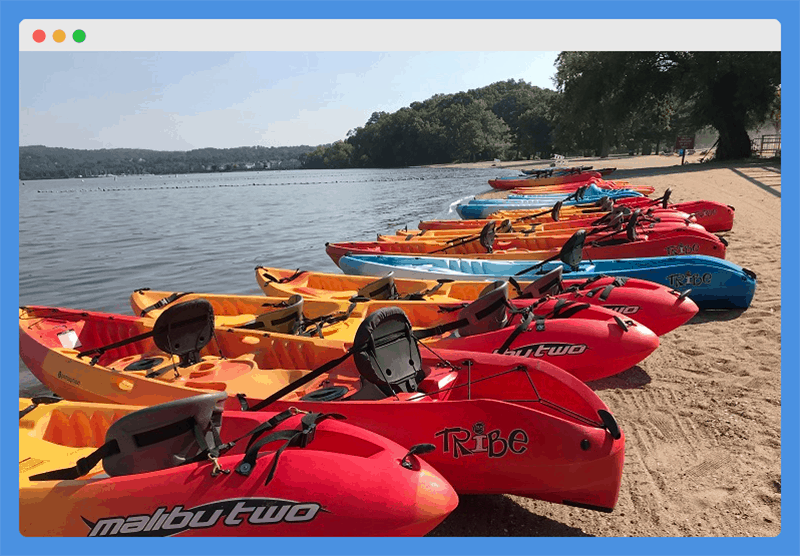
Recreational kayakers typically plan to spend a maximum of two or three hours on the water. Because of this, they're often closer to where they started if heavy winds do arise during their paddle.
Nevertheless, recreational kayakers should ever be prepared for the possibility of current of air earlier they ready out.
In addition to checking the latest wind forecast before getting in your kayak, here are a few other tips to prepare for windy recreational kayaking weather.
Paddle Into The Wind
If yous know that wind is going to come up while you're on the water, yous should always start by paddling in the aforementioned management that the wind is expected to come up from. This will assist you take the air current at your back when you lot're trying to get back to your starting location.
Pack Actress Layers
Kayakers should always have a few actress clothing layers packed into one of the all-time kayak deck bags on their vessels.
If the winds cause you to invert and you have to make landfall before you expected to do and so, you'll exist happy to have a warm and dry ready of apparel to put on while you expect for help to get in.
Have An Exit Strategy
Most recreational kayakers start and finish in the same location, simply air current can derail that plan.
So if you fifty-fifty have the slightest clue that heavy winds could come up while you're paddling, brand sure yous place ane or two other shoreline locations where you can land your kayak if you can't make it back to your starting location.
Rubber And Dangerous Current of air Limits For Sea Kayaking
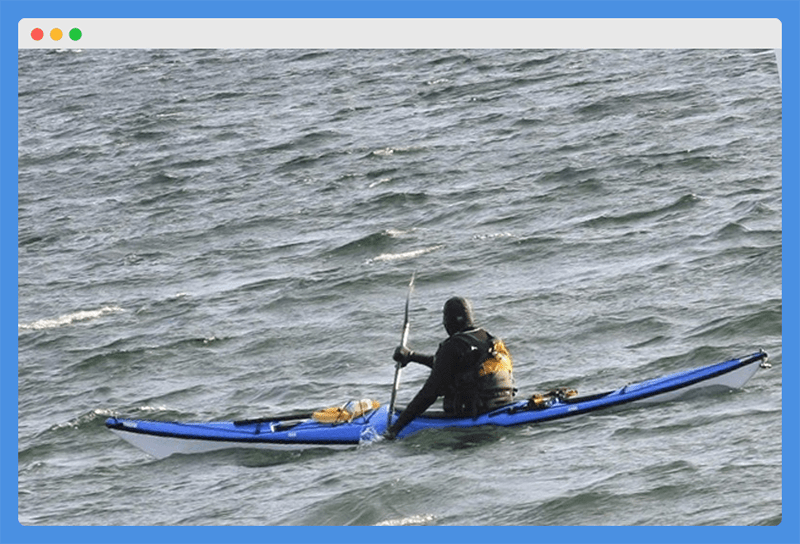
Paddling on the open ocean is arguably i of the nigh exposed forms of kayaking. Non merely can you lot autumn to the mercies of high winds and large waves, but you'll frequently discover yourself contending with potent ocean currents that can crusade your kayak to run off course.
And then what are the safe and unsafe wind limits for sea kayaking?
Safe Air current Limits For Sea Kayaking
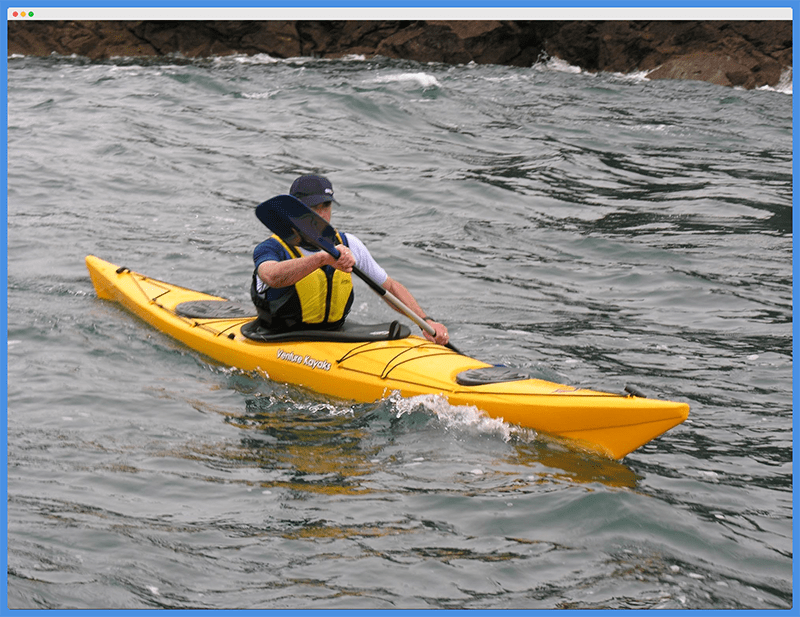
Because of the vast number of boosted environmental factors that you'll have to fence with when you're sea kayaking, the safety wind limits for this form of kayaking are a bit lower than you'll find for recreational kayaking.
When you lot're truly kayaking on the open ocean, y'all'll always be contending with moving ridge activeness.
High winds are plainly merely going to make those waves more than fierce and tin can likewise upshot in more than spray that gets you moisture and opens the door to a number of temperature-related health issues.
Additionally, the all-time sea kayaks tend to exist much longer than kayaks used for recreational purposes. This means that they have a larger horizontal area that can be impacted by the wind.
All of that being said, you need to start paying attention to sustained winds between 7 and 10 miles per hour when sea kayaking.
While winds from 4 to 7 miles per hour will make ocean kayaking more difficult, you should still be able to navigate your kayak effectively in those conditions.
Dangerous Wind Limits For Sea Kayaking
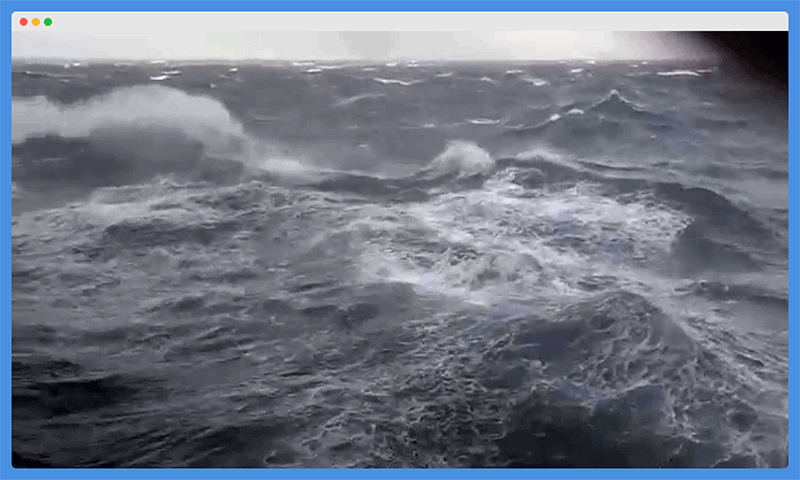
The vast nature of the bounding main makes winds even more imposing for sea kayakers. Not only do can they cause a nuisance when y'all're but trying to go dorsum to your starting location, only heavy winds on the body of water tin can present serious health and safety concerns.
Heavy winds on the ocean are typically associated with some sort of tempest system.
And even if that storm system is relatively balmy, it volition also mean larger waves and can sometimes hateful strong currents that make information technology much more than hard to keep your kayak tracking in your desired direction.
All of these combined factors can severely increase your odds of capsizing when paddling on the ocean. Even if you know how to execute a wet exit and get back into your kayak, heavy winds can push button all your skilful kayak preparation to the side.
There's quite possibly not a worse feeling than being in the ocean and seeing the wind push button your kayak abroad from you.
None of us want to be in this situation, and the reality is that this can even happen when sustained winds brainstorm to acme just ten miles per 60 minutes.
Our absolute upper range for air current limits when sea kayaking is somewhere betwixt 10 and 15 miles per hr considering there are a number of additional factors that can touch on your safety when paddling on the sea in windy atmospheric condition.
Your location, proximity to accessible shoreline, and power to make landfall without encountering dangerous bounding main waves are just a few of these factors we'd like to mention in this commodity.
Simply the condom bet is to avoid sea kayaking if the boilerplate air current speeds begin to reach that eight to x mile per hour range.
Y'all should always be prepared with the essential kayaking prophylactic equipment whether y'all're paddling on completely flat h2o or in slightly windy weather.
Tips To Gear up For Windy Body of water Kayaking Conditions
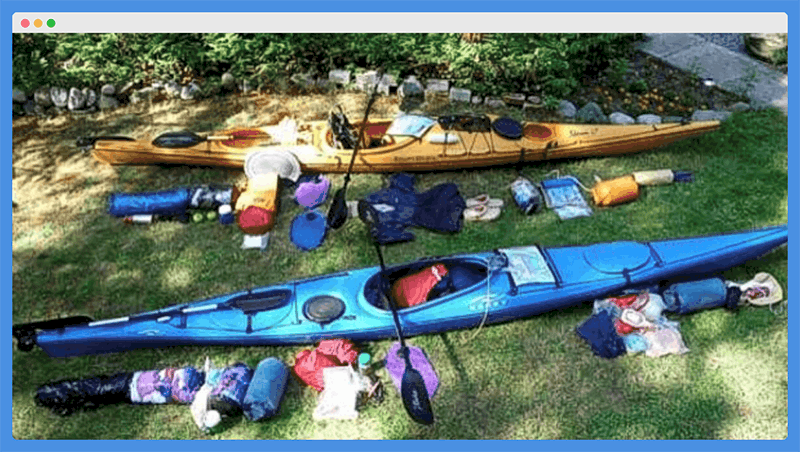
As nosotros previously stated, super windy conditions while yous're out on the ocean tin pose a serious threat to your personal wellness. So let'due south look at some of import tips to prepare for windy ocean kayaking atmospheric condition.
Take The Proper Safety Equipment
Sea kayakers should always have the right prophylactic equipment on their kayak. This includes items similar flotation bags, throw ropes, tow lines, and all of the other items included in our listing of the best bounding main kayak accessories.
E'er Paddle With A Partner
Because of the added difficulty that comes forth with climbing dorsum into a body of water kayak, it'due south always good to paddle with a partner.
Non only tin that partner aid you get back into your kayak on a calm day, but they requite you lot someone to rely on if you wind up offshore in specially unfavorable weather condition conditions.
Know The Local Authorities
Wherever you lot outset your sea kayaking expedition, it'due south important to get to know the local regime.
This doesn't necessarily hateful meeting them at their favorite watering holes every evening, but you lot should certainly know the contact information for the local Coast Baby-sit station, sheriff's office, or police department before heading out onto the water.
If you lot're relying on a waterproof handheld radio for sea kayaking, y'all'll demand to know the correct channels to contact the appropriate authorities in case of an emergency.
Knowing these numbers in accelerate volition save you valuable time when you demand them the near.
Safe And Dangerous Wind Limits For Whitewater Kayaking
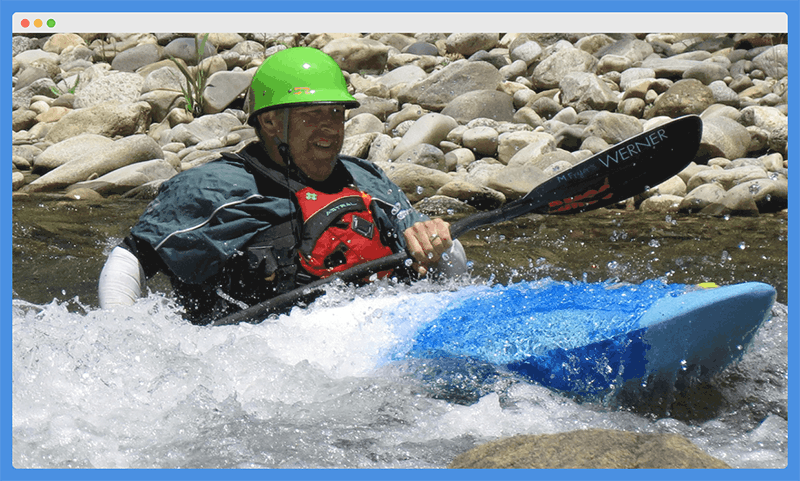
When yous call back of whitewater kayaking, wind speed might not be the commencement ecology factor you think of. And while things like flow rate can certainly accept a larger impact on a whitewater kayaker'southward decision-making process, heavy winds can all the same waylay even the best-laid plans for a whitewater kayaking trip.
Then what are the safe and dangerous wind limits for whitewater kayaking?
Safe Current of air Limits For Whitewater Kayaking
The adept news for those of y'all that ain ane of the best whitewater kayaks is that current of air has a minimal impact on rivers.
This is because they tend to be much more protected than whatsoever other waterway, and it'due south the same reason why whitewater kayakers can typically go along their runs fifty-fifty if average wind speeds exceed xv miles per hr.
Unsafe Air current Limits For Whitewater Kayaking
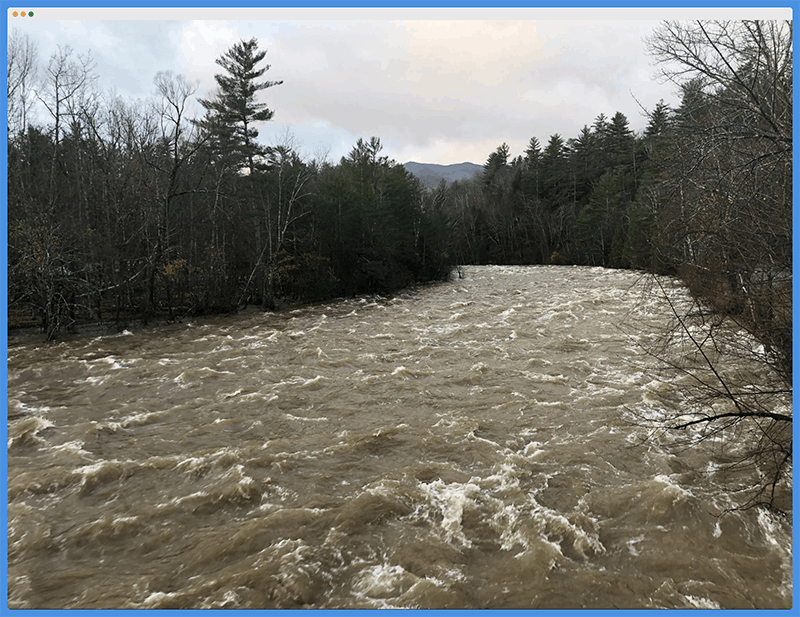
There is, nevertheless, an upper limit for winds that begin to brand whitewater kayaking a bit dangerous. When average wind speeds climb above xx to 25 miles per hour, it can ofttimes be a sign of a larger storm organisation on the horizon.
When at that place'due south a larger storm moving in, whatsoever water-based activities should be approached with a healthy dose of "safety-first" mentality.
So while the wind might not pose the greatest run a risk to whitewater kayakers, it tin often exist a sign of larger risks to come.
Tips To Gear up For Windy Whitewater Kayaking Conditions
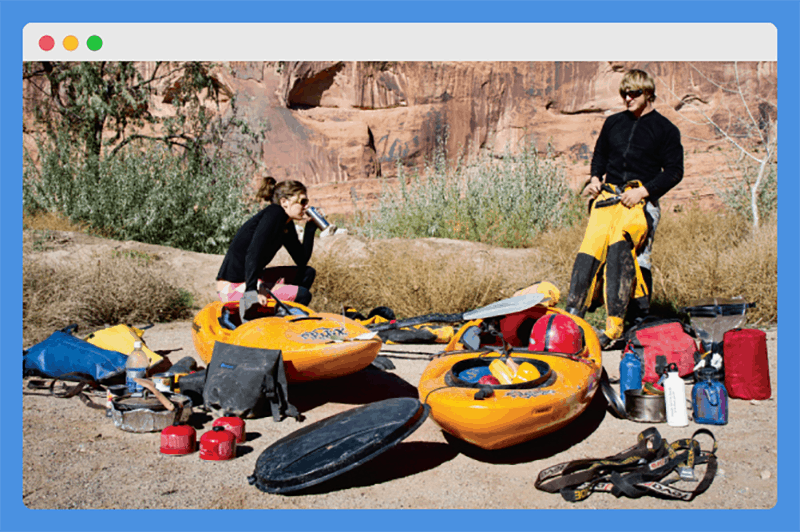
The best way to prepare for windy whitewater kayaking conditions is to exist aware of what's upriver.
If you lot're whitewater kayaking in an area that'southward highly susceptible to flash floods, heavy winds tin often be a sign of a storm system miles away that can finish upwardly causing flood-like conditions where yous're paddling.
Safety And Unsafe Wind Limits For Kayak Fishing
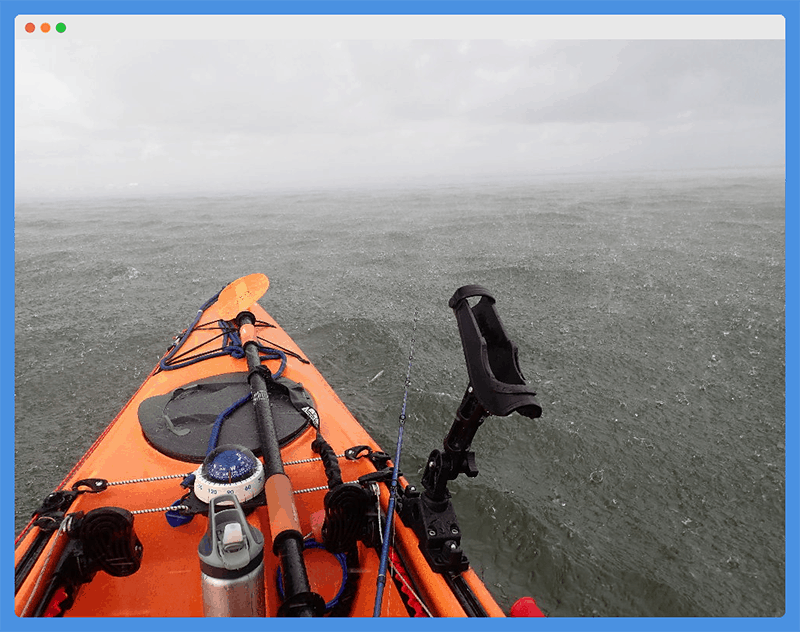
Kayak line-fishing is a sport that can take identify on many different waterways. Just whether you're a freshwater or saltwater angler, the reality is that all of those waterways tin be impacted by heavy winds.
So what are the safe and dangerous wind limits for kayak fishing?
Safe Wind Limits For Kayak Fishing
Kayak fishing has its unique challenges considering of the abundant number of accessories that most kayak anglers attach to their vessels. This means that kayak line-fishing is often done in the heaviest of kayaks out there.
This makes even the best fishing kayaks much less maneuverable than your average recreational or sea kayak. That maneuverability tin exist even farther compromised when high winds come up upwardly while you're on the water.
Kayak anglers also tend to outfit their vessels in such a way that they take a higher profile than other types.
This makes them more susceptible to the effects of current of air and more probable to exist blown in whichever management Mother Nature desires to push them.
All of this being said, kayak anglers will typically begin to feel the effects of average current of air speeds once they rise above virtually four miles per hour. But even as the winds progress from four up to near nine miles per hr, you tin withal safely remain on the h2o if you're kayak fishing.
The corporeality of time for which that volition remain the case will, of grade, depend on the exact body of h2o where you're fishing.
If you lot're line-fishing on a smaller trunk of water or in a more than protected area, y'all're going to feel the effect of the wind much less.
But if you're angling on the body of water or even on a protected littoral bay, those winds are going to impact you much more than chop-chop.
All in all, information technology'south condom to say that the safe air current limit for kayak fishing is between four and nine miles per hour, depending on other factors.
Unsafe Wind Limits For Kayak Fishing
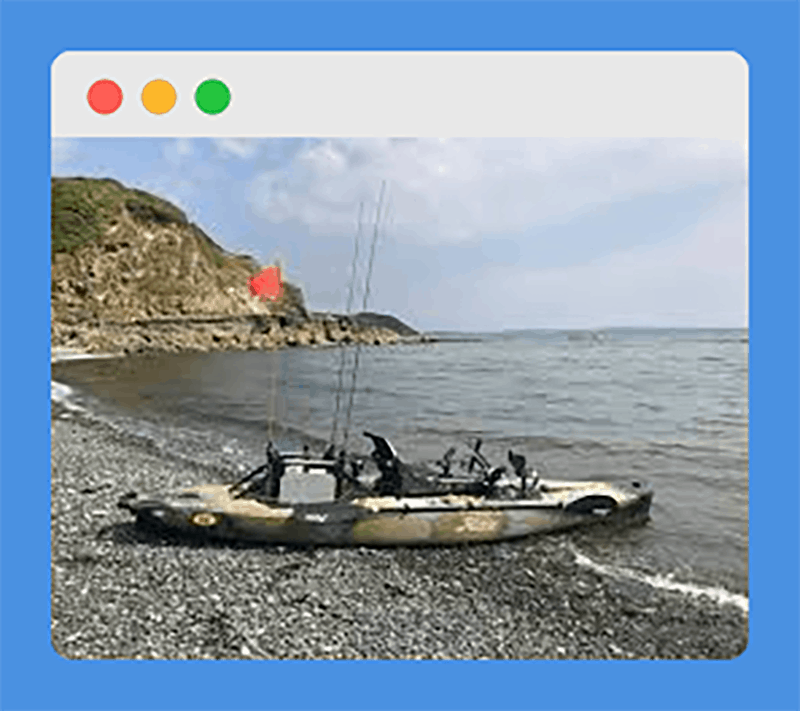
Kayak anglers typically don't spend virtually of their time on the water paddling. And while some of the best angling kayaks are made with pedal-bulldoze systems, they are still some of the least maneuverable kayaks out there.
In general, fishing kayaks tend to be much heavier and less efficient than sea kayaks or fifty-fifty recreational kayaks. They are designed to be very stable on at-home waters, but they aren't necessarily fabricated to make headway in very windy weather condition.
Because of that, kayak anglers should brainstorm to retrieve twice about staying on the h2o when average wind speeds begin to exceed 10 miles per hour.
If you practice have a pedal-drive system in your kayak, however, you may still be able to maneuver effectively in winds from 10 to 15 miles per hr.
Only once average air current speeds exceed 15 miles per hour, it's time for kayak anglers to make landfall. And the heavier the kayak you lot have for line-fishing, the earlier yous should retrieve near heading home as the wind speeds begin to increment.
Tips To Gear up For Windy Kayak Angling Conditions
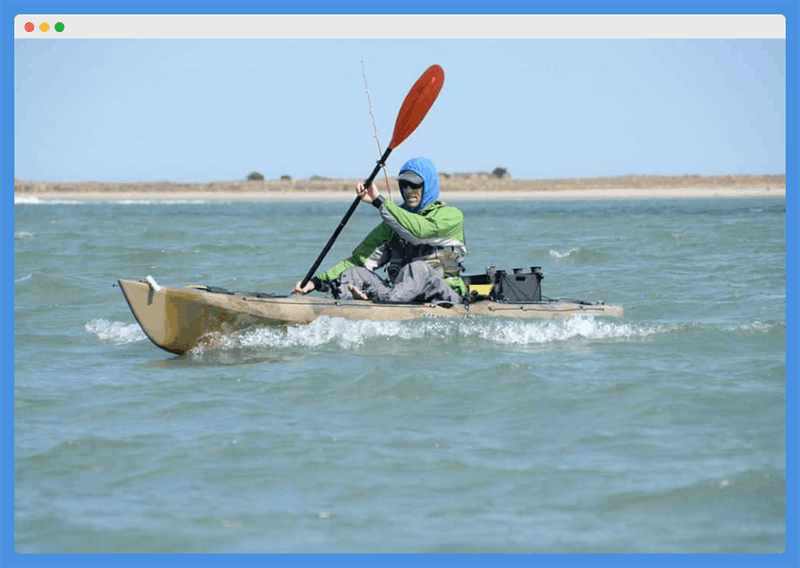
Fishing kayaks can be so darn heavy that some kayak anglers elect to place i of the all-time trolling motors on the dorsum of their vessel to brand their lives easier.
Whether you adopt to paddle your line-fishing kayak, rely on a trolling motor, or have a pedal drive line-fishing kayak, you should follow these tips to set for windy kayak fishing conditions.
Fish Close To Shore
Line-fishing close to the shore is one of the recommendations for being a more successful kayak angler in general, regardless of the weather condition conditions during the day.
But fishing close to the shore will also make information technology easy to pull your kayak onto land if current of air speeds make it impossible for you lot to navigate back to your original launching location.
Commencement Your 24-hour interval Moving Upwind
If you lot utilise your favorite weather app to check the wind forecast earlier yous caput out onto the water (which you should!), yous should know if the air current is expected to come up upwardly and which direction it'southward expected to come up from.
When you know that current of air is going to come up up afterwards in the afternoon, you tin can start your 24-hour interval by moving upwind and exploring line-fishing holes in that management. Past doing this, you'll increment the odds of having the wind at your back when information technology does come and you realize it'southward time to start heading dorsum to your starting spot.
Know Your Local Waterways
Most kayak anglers tend to fish in the same locations over and over once again. While some kayakers might find this tedious, it gives kayak anglers a decided advantage when it comes to dealing with heavy winds or unexpected conditions events.
Past getting to know your local waterways, you'll know the all-time beach locations and boat ramps to choose from.
Not only tin can this advanced knowledge make you a better kayak angler, just it tin can also give you lot more options for your get out strategy when unexpected winds cutting your fishing day short.
Final Thoughts
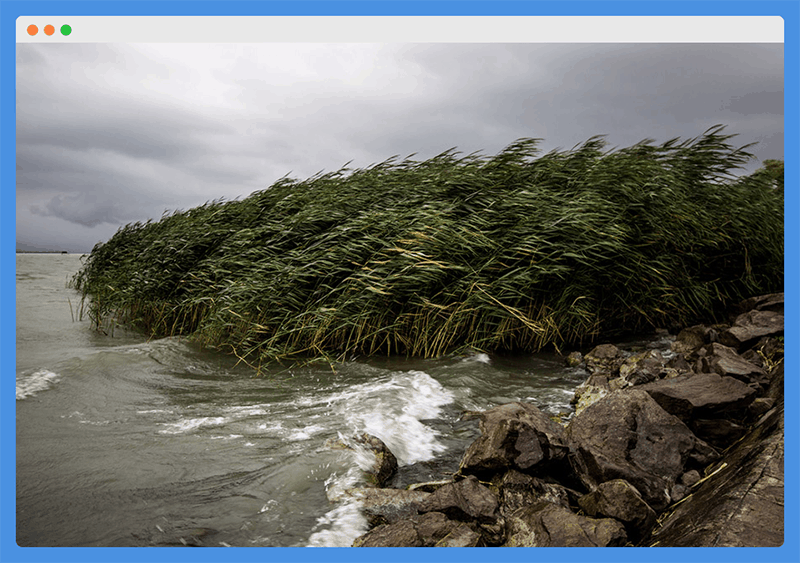
No matter where you spend most of your time in a kayak, the current of air is arguably the biggest environmental factor that tin can plow an otherwise beautiful kayak twenty-four hour period into a major struggle.
But if you're well prepared and you program your kayak routes effectually the expected wind patterns in your surface area, yous'll brand your life (and the lives of anyone yous like to paddle with) and then much easier.
Nobody wants to paddle into a headwind while thinking virtually where y'all'll get a beer and pizza in one case yous get back to your motorcar. Information technology'southward always best to have that current of air at your back as you work back toward your starting location.
While the air current can be unpredictable, studying current of air patterns can reveal some regional consistency that you can acquire to count on.
This will take some time and diligent sensation, simply doing so can ultimately atomic number 82 yous to utilise the wind to your reward out on the water!
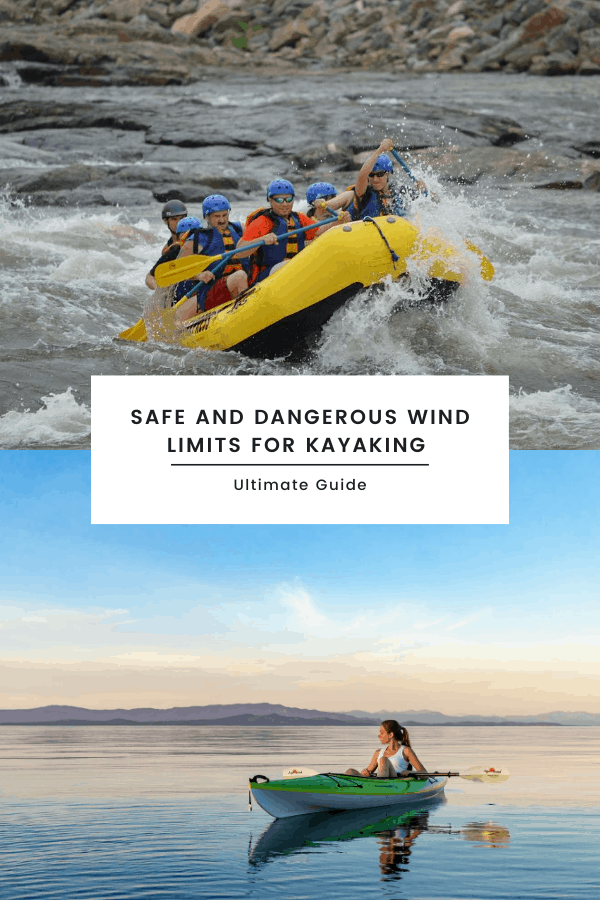
![]()
Author: Peter Salisbury Pete is the Owner of KayakHelp.com. Built-in and raised in Cleveland, Ohio, he grew up kayaking, fishing, sailing, and partaking in outdoor adventures around the Great Lakes. When he's not out on the h2o, you can find him skiing in the mountains, reading his favorite books, and spending time with his family unit.
Source: https://www.kayakhelp.com/safe-and-dangerous-wind-limits-for-kayaking-ultimate-guide/

0 Response to "Climbing Back Into a Kayak in 25 Easy T"
Post a Comment